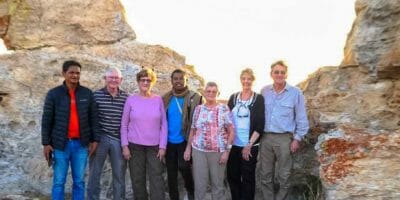Indeed, the month of May constitutes a major benchmark in the history of Madagascar.
Borrowed from the language of Shakespeare, the word May Said in the same way in Malagasy. His other meaning, which designates something “burned”, is shared in almost all dialects in the country. And this is probably no coincidence: May is often bubbling, according to the chronological frieze of historical events.
In addition to May 1, 1959, the date on which Philibert Tsiranana was elected president by the great voters – provincial advisers, parliamentarians and delegates of the municipalities – this month marked the 20th century by a succession of agitations, hasty decisions and arrests. These adventures have cracked the ideological and political bases imposed by the alleged dominators.
From the 1920s, the anti -colonial struggle was led by engaged personalities, such as Jean Ralaimongo and his companions. When they started, they create newspapers to denounce the abuses perpetrated by the colonists as well as the Indigenous Code.
On May 29, 1929, activists close to communist ideology demonstrated against inequality, demanding French citizenship for all the Malagasy. This claim is unfortunately quickly stifled by the colonists. The leaders are arrested, including Jean Ralaimongo, although he was absent.
From May 5 to 7, 1942, the operation Ironcladwhich takes place in the mail bay in Diego-Suarez, shows that Madagascar is a miniature scene of the Second World War. The British invade the big island, fearing that the axis forces (Japan-Germany) would take control of the Southwest Indian Ocean. After more than two years and five months of occupation, the Vichysts of Madagascar capitulated on November 8, 1942 and signed the armistice in Ambalavao, which became the capital of the Vichy regime in Madagascar.
On May 1, 1950, on the occasion of the Labor Day, under the leadership of unions affiliated to the CGT and the Communists of Diego-Suarez, the Dockers demonstrated by brandishing banners to claim better working conditions. The movement is gaining momentum, and between 1950 and 1953, the city of sugar bread became a source of inspiration for nationalists from other regions. As usual, colonial power violently represses those who oppose the established order.
From May 2 to 4, 1958, the Tamatave Congress was held, intended to determine the future of the country with the approach of independence. More than a dozen associations and political parties participate to trace a common perspective. This meeting was only a sketch of the fate of the darling homeland.
On May 13, 1972, a well -known date of the Malagasy people, marked a historic turning point. Engraved in textbooks, it corresponds to the fall of the First Republic and its President, considered to be the “father of independence”. The student strike, repressed in blood in front of the town hall of Antananarivo, remains anchored in the collective memory. Although some witnesses of the time claim that other provinces were hostile to the Malagasy then advocated, the dominant story goes in one direction.
Obviously, these episodes are just one overview. They testify to the fierce will of the ancients to free themselves not only from colonization, but also from neocolonialism. These ancestors gave everything so that their descendants could live free.
ISS HERIDINY











